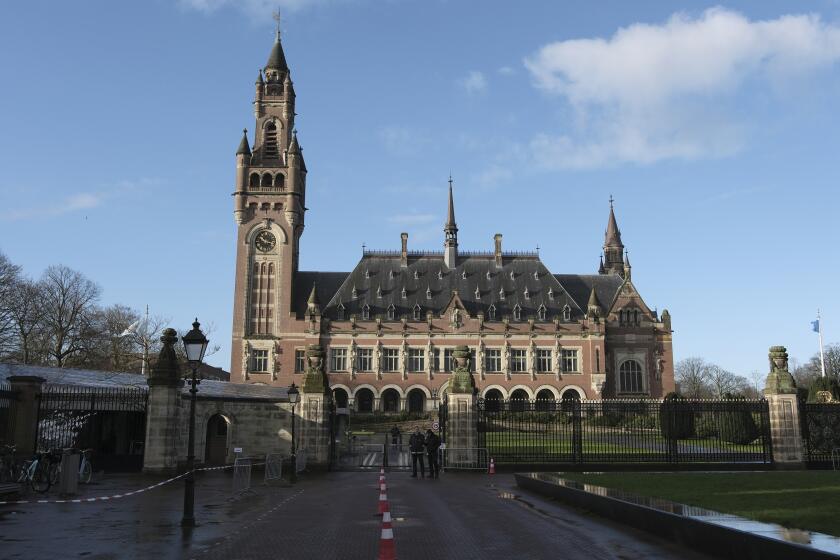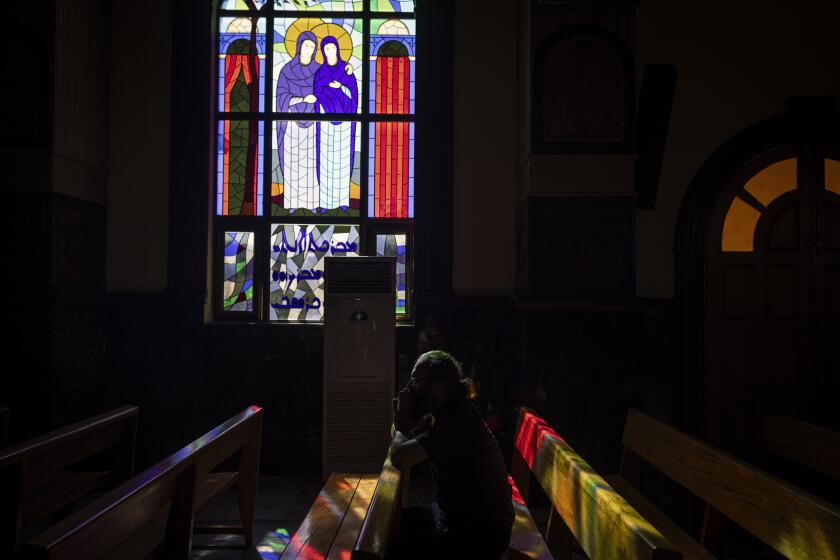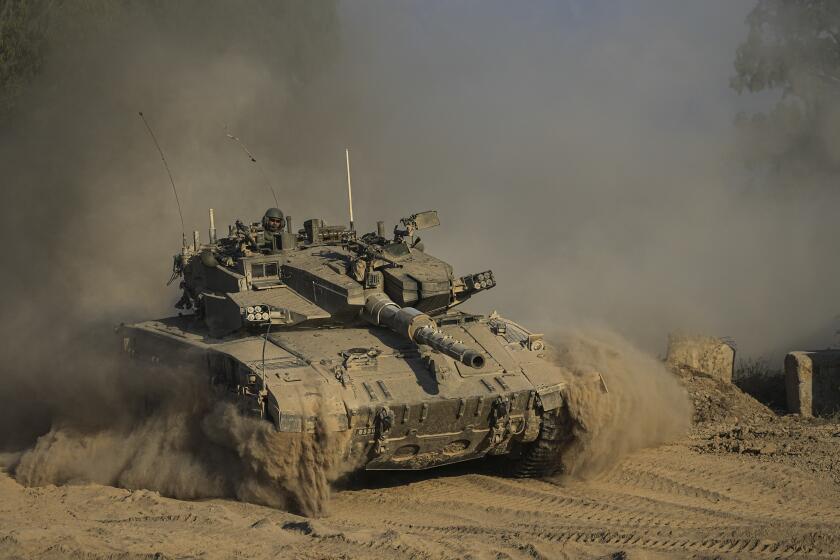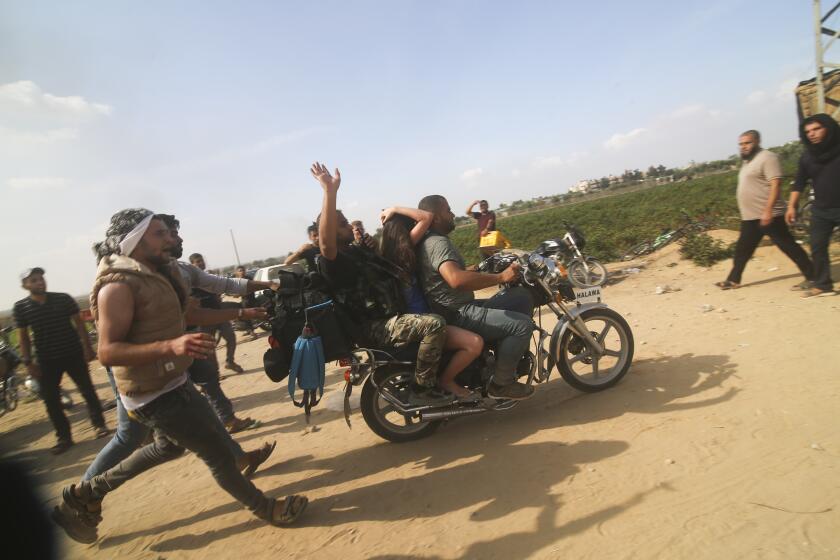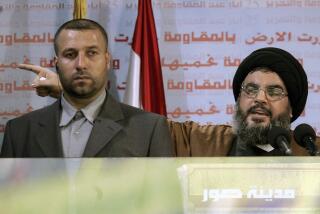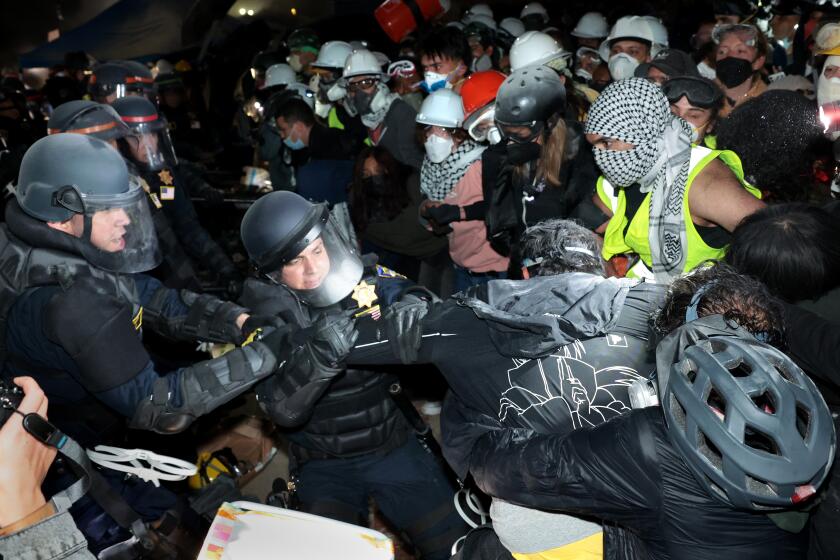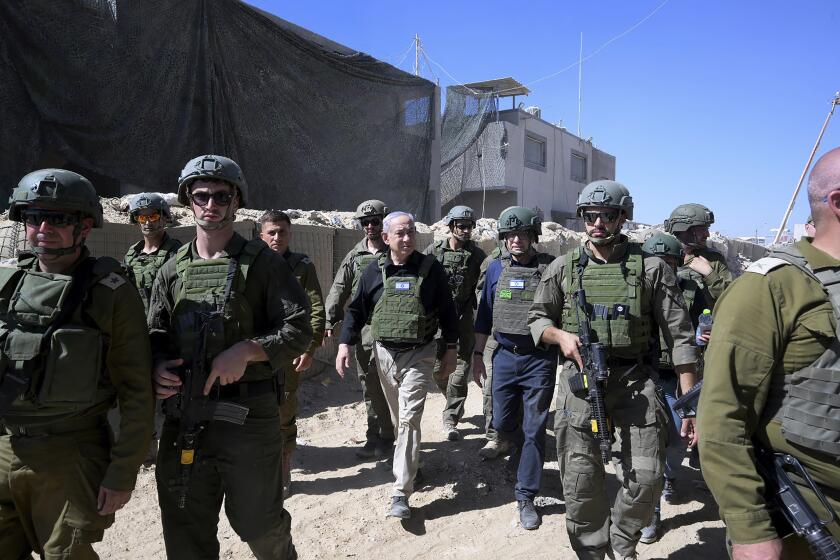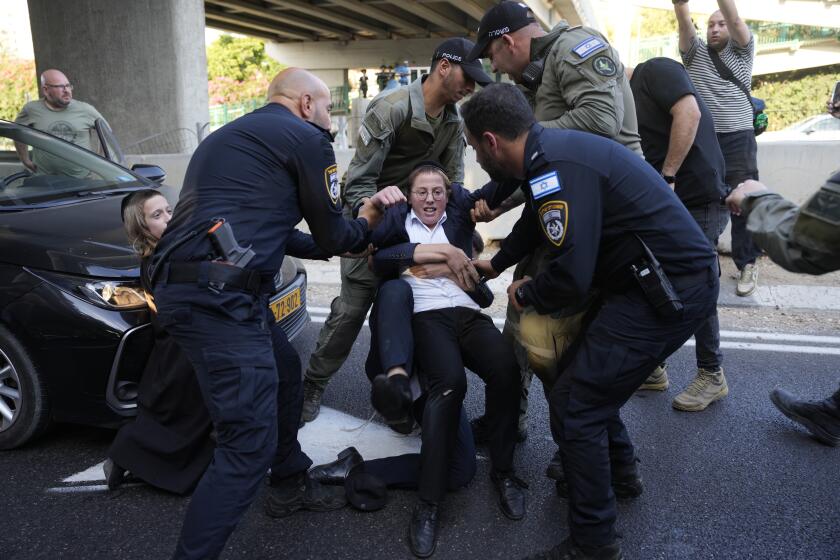Drone strike by Yemen’s Houthi rebels kills 1 person and wounds at least 10 in Tel Aviv
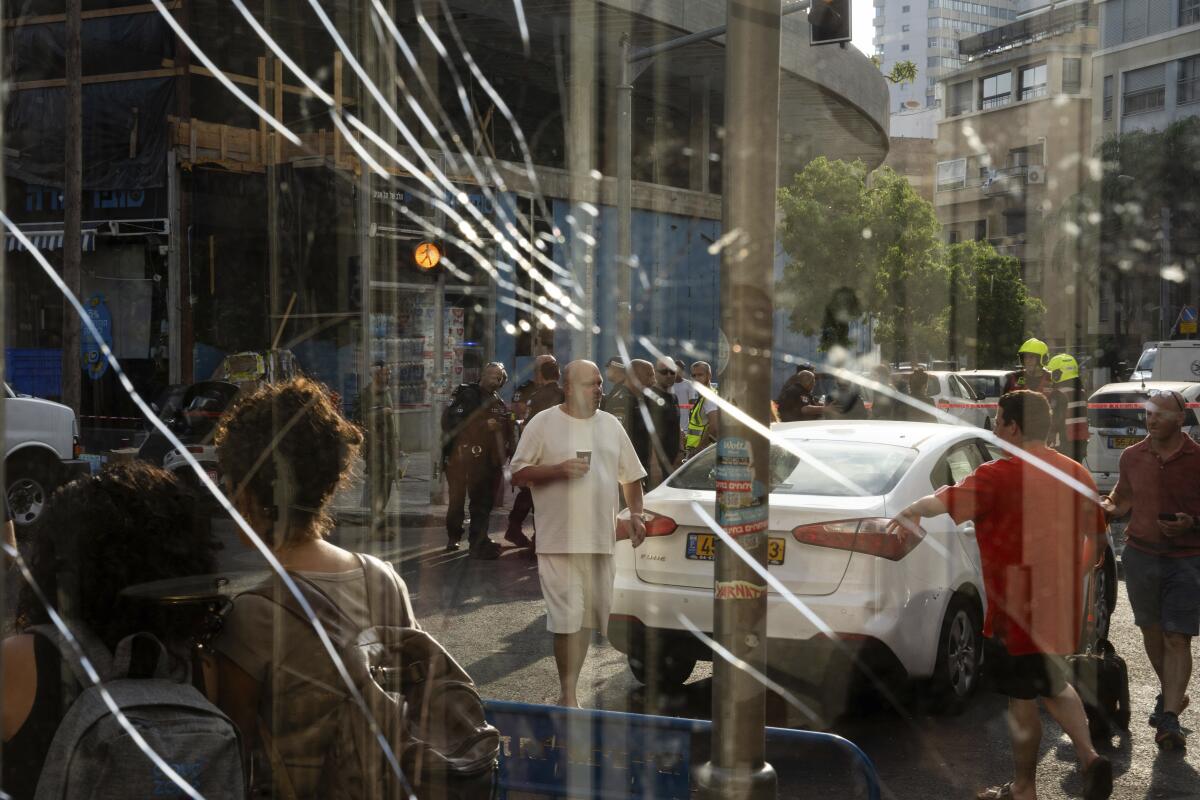
An Iranian-made drone sent by Yemen’s Houthi rebels struck Tel Aviv on Friday, leaving one person dead and at least 10 wounded in the group’s first lethal strike into Israel.
The aerial strike rumbled through the center of the city near the U.S. Embassy, causing shrapnel to rain down and spreading shards of glass from broken windows over a large area.
The attack in Israel’s biggest city was startling because the drone appeared to have crossed much of the country through the multilayered air defenses that have intercepted almost all of the drones and rockets that Yemen’s Houthis have been launching toward Israel since the Gaza war began. Most have failed even to reach Israel’s southernmost city, Eilat, on the Red Sea some 160 miles south of Tel Aviv.
The Israeli military said it was investigating what went wrong. Chief spokesman Rear Adm. Daniel Hagari said the drone was detected by air defenses, but an “error” occurred and “there was no interception.“
“We are investigating the entire chain,” he said. Another military official blamed “human error.” The official spoke on condition of anonymity because the investigation was ongoing.
The top United Nations court has ruled that Israel’s settlement policy in the occupied Palestinian territories violate international law.
Houthi spokesman Yahya Sare’e claimed responsibility for the attack in a statement published on the social media platform X. He said it was in retaliation for the Israel-Hamas war and had hit one of the group’s many targets.
Israel’s military identified the drone as an Iranian Samad-3 upgraded to travel long distances and said it was believed to have come from Yemen.
The drone hit at around 3:10 a.m., blowing out windows and damaging cars throughout a coastal neighborhood of Tel Aviv and reverberating in nearby cities. The military said it had not determined if it exploded in the air or directly struck buildings.
People thronged to the area as police helicopters hovered overhead. For many, it reaffirmed feelings of disillusionment with how the military has handled the war since October.
Yossi Nevi, a retired evacuee from Kiryat Shmona, said he was shaken awake in the hotel he lives in. Nevi said the strike made him lose “all trust in the army — not that I had much after the past nine months.”
Eldad Namdar, who owns a camera store next to the intersection where the drone is believed to have exploded, said he hopes the war ends soon, but he also wants it to be concluded in a way that secures his future.
“I don’t want this to happen again in six months, I want them to finish this situation until the end,” he said.
The U.S. State Department said there was no damage to the U.S. Embassy or any of its staff members.
The Houthi strike hit hours after Israel’s military confirmed one of its airstrikes had killed a Hezbollah commander and other militants in southern Lebanon. Israel has so far not made attacks on the Houthis, allowing its allies instead to take the lead as it focuses its efforts on the war in Gaza and ongoing fighting with Lebanon’s Hezbollah militant group.
Christian areas scattered across Hezbollah-dominated southern Lebanon find themselves on the front line of a fight that few see as theirs.
The Houthis have routinely claimed responsibility for hitting targets in the Red Sea and Gulf of Aden.
Analysts and Western intelligence services have long accused Iran of arming the group, a claim that Tehran denies. In recent years, U.S. naval forces have intercepted a number of ships packed with rifles, rocket-propelled grenades and missile parts en route from Iran to Houthi-controlled areas of Yemen. The Houthis maintain that their attacks target ships linked to Israel, the United States or the United Kingdom, however many have little or no connection to the war.
Friday’s drone strike on Tel Aviv could rekindle fears about the Israel-Hamas war in Gaza expanding into a regionwide conflagration.
Such fears run counter to renewed hopes that Israel, by signaling that it’s near the end of its military operations in Rafah, could foster an environment more conducive to negotiations as international mediators continue to push for a cease-fire. The deal under discussion would halt fighting and free about 120 Israeli hostages held by the militant group in Gaza.
Israel’s military bombardment in recent days have taken a constant, deadly toll on Palestinians in the Gaza Strip.
Israel remains divided over striking a deal, with some wanting the government to take the necessary steps to free the hostages and others, including far-right national security minister Itamar Ben-Gvir, disavowing the idea. On Thursday, Ben-Gvir visited Jerusalem’s most sensitive holy site to pray for the return of Israeli hostages, he said, “without a reckless deal, without surrendering.”
Israel’s air defense system has intercepted thousands of projectiles throughout the war, including Hamas rocket fire from Gaza. But officials caution they are not 100% effective, and the systems appear to have struggled against small and hard-to-detect attack drones.
Like Hamas, Hezbollah and the Houthis are backed by Israel’s archenemy, Iran. Israel for the most part also has avoided direct confrontations with Iran throughout the war. Iran launched hundreds of drones and missiles at Israel during a single incident in April in response to Israel’s alleged assassination of a pair of Iranian generals in Syria at the time.
The war in Gaza, which was sparked by Hamas’ Oct. 7 attack on southern Israel, has killed more than 38,600 people in the territory, according to Gaza’s Health Ministry, which does not distinguish between combatants and civilians in its count. The war has created a humanitarian catastrophe in the coastal Palestinian territory, displaced most of its 2.3 million population and triggered widespread hunger.
Hamas’ October attack killed 1,200 people, mostly civilians, and militants took about 250 hostage. About half remain in captivity, with about a third of them believed to be dead, according to Israeli authorities.
Associated Press writer Lidman reported from Tel Aviv and Metz reported from Rabat, Morocco. AP journalists Ibrahim Hazboun in Jerusalem; Jack Jeffery in Ramallah, West Bank; and Michael Wakin in Dubai, United Arab Emirates, contributed to this report.
Human Rights Watch said the acts of the Palestinian fighters met the international legal definition for crimes against humanity and war crimes.
More to Read
Start your day right
Sign up for Essential California for news, features and recommendations from the L.A. Times and beyond in your inbox six days a week.
You may occasionally receive promotional content from the Los Angeles Times.
